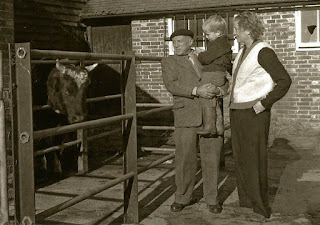 |
| Have stylist, will travel... |
I love to read packing tips, and every once in a while I'll even find some new ones. "Virtuoso Life" is a lush magazine sent to us by a travel agency who once arranged a trip to Italy. It might as well be called "Virtual Life". I will never get to all those wonderful places let alone need tips on buying art abroad and truffle hunting in Switzerland, but it makes for great armchair traveling.
These tips from stylist Christina Burns (above) appeared in a recent issue. One of Christina's clients is Travel Channel host Samantha Brown, who has always been my wish-I-could-look-like-her-when-I-travel inspiration.
 | ||
| Samantha and Christina |
> Remember you'll be in your pictures. You can buy a postcard of the Eiffel Tower for a few francs, but the photo of you and the Eiffel Tower is priceless. It's worth thinking about what you're wearing.
> Research your destination and/or itinerary. Check weather forecasts and even websites of restaurants and hotels you'll be visiting. What's the vibe? Will you feel out of place in a t-shirt and jeans in a 4-star lobby? If you're looking forward to zip-lining or spelunking, pack the necessary gear.
> Pack a Little Black Dress. Look for one that can be worn day or night. Probably indispensable.
> Bring a BIG scarf, one that can work as a sarong, to curl up in on long flights or spread on the grass at a park.
> Take a trench coat. I'm not a trench coat kind of gal myself, but I do have a lightweight variation for travel. And who doesn't want to look like Holly Golightly for a few days?
> Some quick tips: Inexpensive sunglasses, not your treasured$$ beauties. Comfortable ballet flats. Travel size of your favorite fragrance. Simple or delicate necklace to wear with everything.
> Treat yourself at the airport. Pick up a stack of gossip magazines or the latest best-seller. Vacation is treat time!
May I add...
> Never wear anything for the first time on a trip (especially shoes). Wear it to see if it wrinkles badly, is too sheer, rides up or isn't fabulous. Also try-on combos of pieces that may look great in your head. They don't always work in reality.
> Don't bring Really Good Jewelry. Keep what you do take in your carry-on or travel bag, not checked in a suitcase. I even have some "junk jewelry" I would hate to lose!
> Don't invest in a classy-looking suitcase. Expert travelers suggest using the most nondescript bag so as not to draw attention to what might be inside.
> Pack like a science experiment. You know those compression bags that squeeze the air out of your clothes with the promise to save space and avoid wrinkles? They really work. Packing may take a little longer, but you will end up with items organized and with more room. Need space for the souvenirs, right?
> Don't fear the carry-on. Compression bags (see above) will give you more room, but really you can take less. I've packed for several ten-day trips going carry-on only. It's worth the discovery that your bag didn't land with you. The trick is making the "personal item" as big as regulations allow. I use a soft-sided tote and carry my actual handbag inside it.
> Forget a handbag altogether when you can. It's safer and will give you a hands-free day. Look for a flat cross-body bag in lightweight nylon with compartments. And don't load it up!
 |
| Something like this... |
> Look your best when you travel. Yes, air travel is time to be comfortable, but there's a big difference between easy and sloppy. If you're heading to a city, think about a casual shirt dress with a long cardigan or a safari jacket with unstructured pants and a button down. If you are heading to a resort, lighten your color palette but don't go full-out Boho Traveler till you get there. It may not be true, but if there's a chance I'll be upgraded to First because I look good, I'll take it!
> A very wise friend (EG you know who you are) says, "Bring half as many clothes and twice as much money".




























